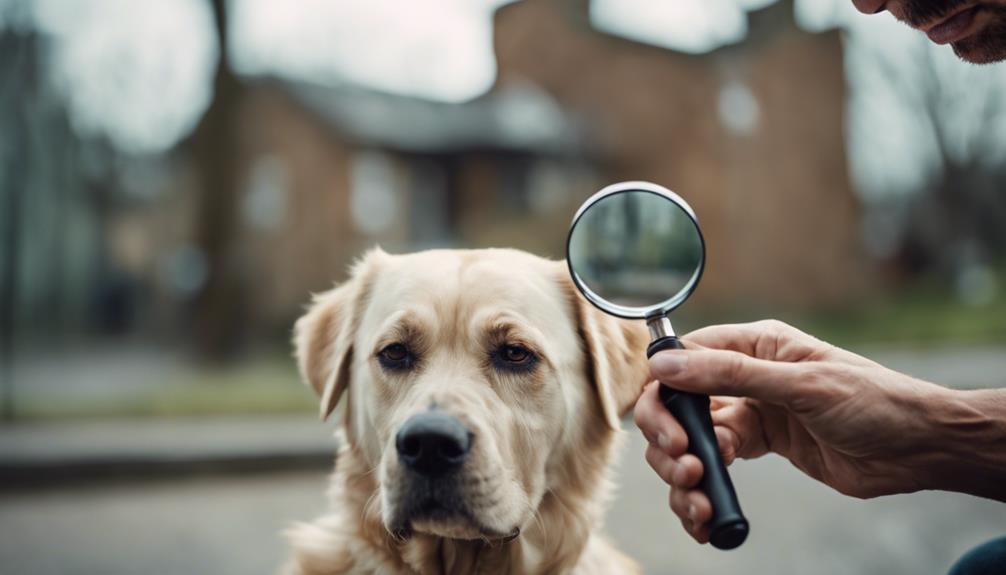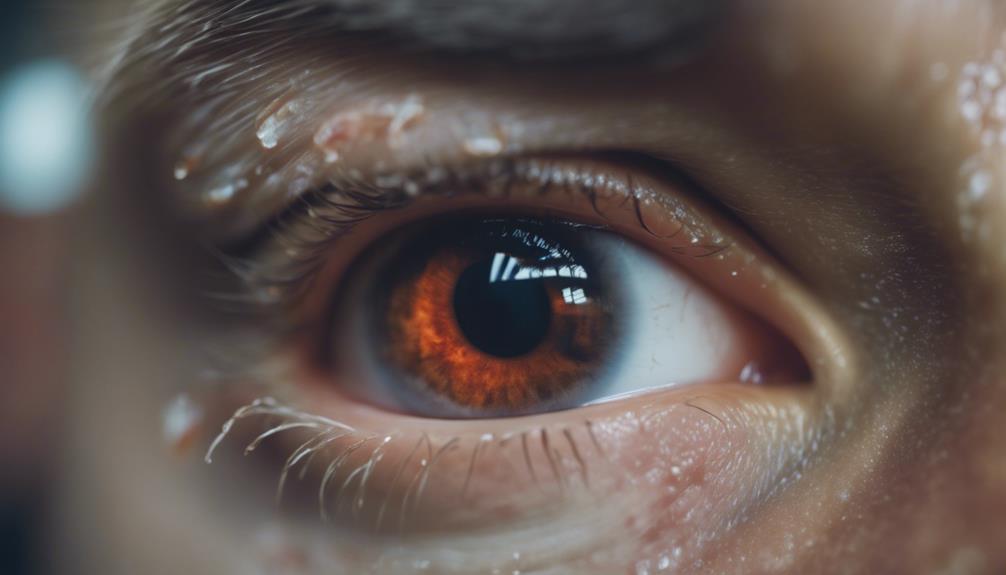Understanding the intricacies of canine eye infections is fundamental in safeguarding your pet's ocular health. From identifying common causes to recognizing key signs, this article equips dog owners with essential knowledge to navigate potential eye ailments effectively.
Prompt intervention and appropriate treatment are crucial in preserving your furry friend's vision. By grasping the nuances of dog eye infections, you empower yourself to take proactive measures and ensure your dog's well-being.
Stay tuned to uncover the five pivotal aspects of canine eye care that every responsible pet owner should be aware of.
Key Takeaways
- Dog eye infections can result from allergies, injuries, or foreign matter in the eye.
- Signs include goop, watery eyes, discoloration, and colored discharge.
- Seek veterinary care for red, swollen eyes or excessive rubbing.
- Treat infections with antibiotics, ointments, or eyewashes; severe cases may need surgery.
Causes of Dog Eye Infections
When considering the causes of dog eye infections, various factors such as allergies, birth defects, injuries, dry eye, and foreign matter in the eye can contribute to these issues.
Allergies, whether environmental or food-related, can trigger inflammatory responses leading to eye infections.
Birth defects, particularly abnormalities in tear ducts, can impair the eye's ability to flush out debris and bacteria effectively.
Injuries, such as scratches or foreign objects in the eye, create opportunities for infections to take hold.
Dry eye syndrome, a condition where the eye doesn't produce enough tears, can result in irritation and potential infections.
Additionally, any foreign matter that enters the eye can introduce bacteria, leading to infections that require prompt attention and treatment.
Signs of Dog Eye Infections
Detecting signs of dog eye infections is crucial for timely intervention and proper treatment to safeguard your pet's ocular health. Common signs of dog eye infections include goop or crust in the corner of the eye, watery eyes, reddish-brown fur discoloration around the eyes, white or gray mucus, and yellow or green discharge. Recognizing these symptoms early can help prevent complications and ensure your dog receives the necessary care. Below is a table summarizing the signs of dog eye infections:
| Signs of Dog Eye Infections | ||
|---|---|---|
| Goop or crust in the corner of the eye | Watery eyes | Reddish-brown fur discoloration around eyes |
| White or gray mucus | Yellow or green discharge |
When to Seek Veterinary Care

Recognizing the signs of dog eye infections is crucial for prompt intervention and appropriate care to safeguard your pet's ocular health, leading to the timely assessment of when veterinary care is warranted.
Here are key indicators that should prompt a visit to the vet:
- If your dog is rubbing or scratching at her eyes
- If eyes appear red, painful, or swollen
- Pursue referral to a veterinary ophthalmologist if necessary
Prompt attention to these signs can help ensure your dog receives the necessary treatment to address the underlying cause of the eye infection and prevent any potential complications.
Treatment of Dog Eye Infections
The treatment of dog eye infections typically involves administering antibiotics to combat bacterial infections and ointments or eyewashes for nonbacterial cases. It is essential to seek professional veterinary care for accurate diagnosis and appropriate treatment. Here is a table summarizing common treatments for dog eye infections:
| Type of Infection | Treatment | Example |
|---|---|---|
| Bacterial | Antibiotics | Chloramphenicol |
| Nonbacterial | Ointments | Terramycin ointment |
| Nonbacterial | Eyewashes | Saline solution |
| Severe Cases | Veterinary treatment | Eye surgery may be needed |
Ensuring prompt and proper treatment is crucial in preventing complications and preserving your dog's eye health.
Maintaining Dog's Eye Health

Regular grooming practices play a crucial role in preserving a dog's eye health. Maintaining your dog's eye health involves proactive care to prevent infections and other issues.
Here are three essential practices to help keep your dog's eyes healthy:
- Trim long hair around the eyes: Long hair around the eyes can cause irritation and increase the risk of debris getting into the eyes.
- Keep eyes clear of debris and mucus daily: Regularly check and clean your dog's eyes to remove any debris or mucus that may have accumulated.
- Use a clean, warm cloth to clean the eye area: Gently wipe around the eyes with a soft, clean cloth to maintain cleanliness and prevent infections.
Conclusion
In conclusion, understanding the causes, signs, and treatment options for dog eye infections is essential for responsible pet ownership. By recognizing the symptoms early and seeking prompt veterinary care, dog owners can ensure the well-being and vision of their furry companions.
Maintaining proper eye health through regular check-ups and appropriate treatment interventions can help preserve a happy and healthy life for dogs. Stay informed and proactive in safeguarding your dog's ocular health to promote overall wellness.




